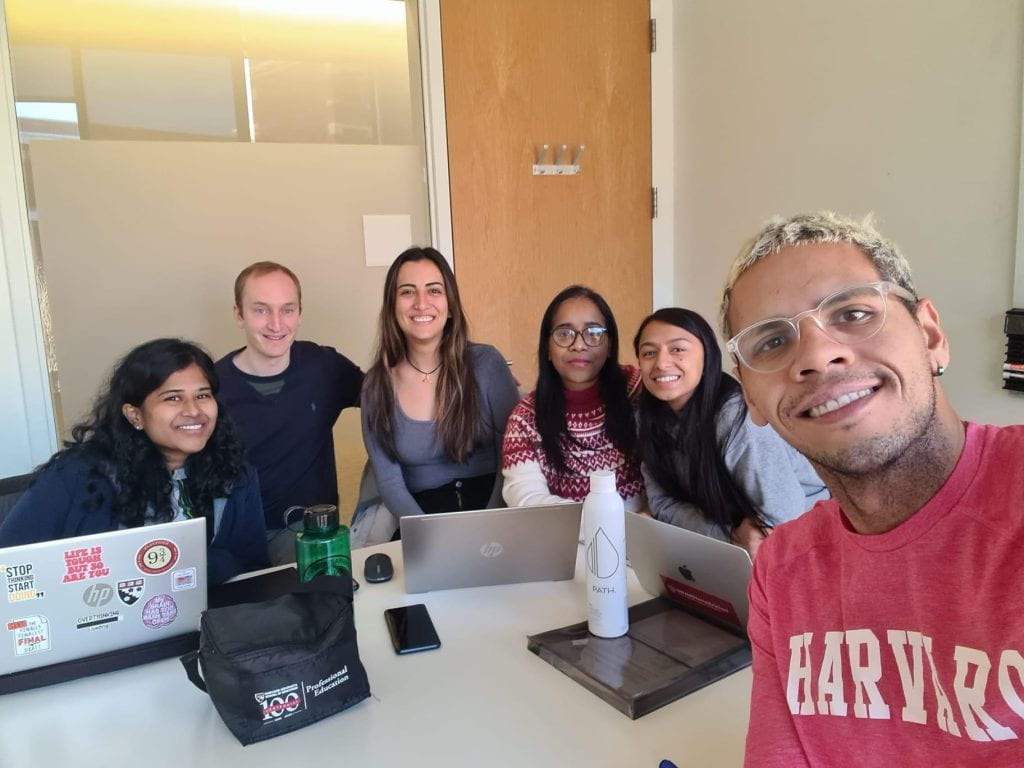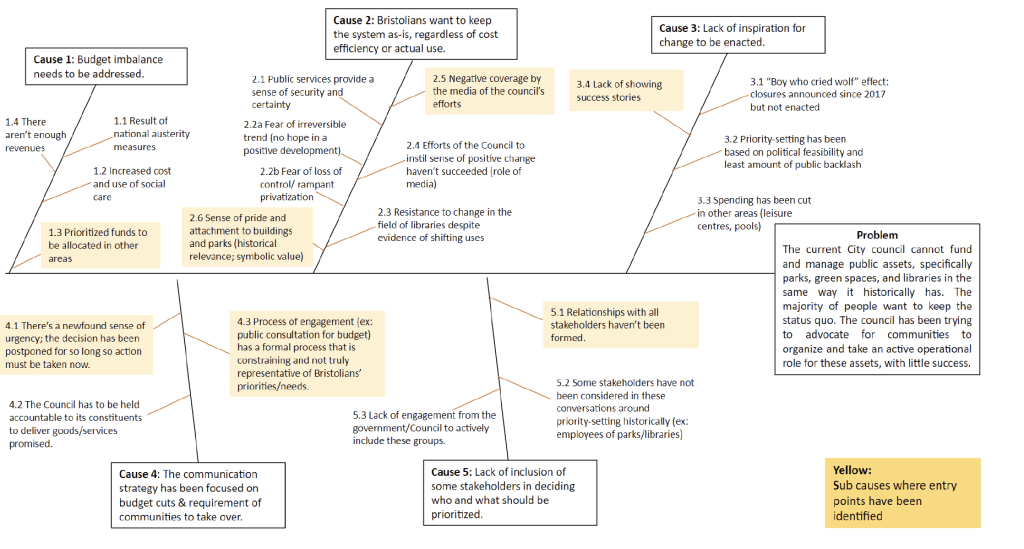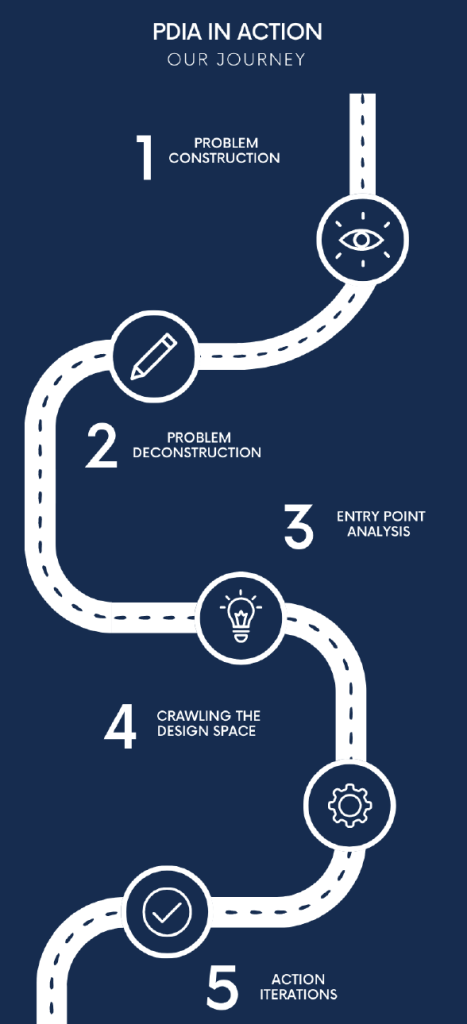Guest blog by Louis Costa, Sofia Martinez, Anjali Nemorin, Mahabuba Rahman, Leonardo da Silveira, Prasanya Thirupathy
Over the course of the “PDIA in action” class at the Kennedy School, our team, The Night Owls, worked together in a very dynamic way to find entry points to a real-world, complex problem in just seven weeks. Our team consisted of six students from three different Harvard graduate schools (and MIT!) and we all had different nationalities, backgrounds and prior experience.
The first hurdle was to find a standing time to meet with our authorizer, Kevin Slocombe, chief of staff to the Mayor of Bristol, UK. This ended up being at 8 am every Wednesday, which was a challenge in itself, given we are the NIGHT Owls! We made the best of it, including using technology to be more flexible for our meetings, which were often hybrid.

The problem, as it was first presented, was that the City of Bristol didn’t have enough funding to sustain the current level of provision of parks, green spaces and public libraries. The City Council was hoping to bring local communities on board to co-manage these assets, rather than announcing closures, but had little success so far.
Here’s a short poetic account of our first weeks of trying to understand the problem:
The people of Bristol were facing a challenge,
They called team night owls to drop ’em some knowledge.
Our authorizer is Kevin, he works for the Mayor,
With whom, by the way, we’re meeting a bit later.
The problem seemed simple: the money was gone,
The old model didn’t work, we need to find a new one.
But the people resisted, they’re already paying their tax,
“Why on earth”, they repeated, “the government let it collapse?”
The council’s been trying to cooperate with their best,
Organizations and citizens but achieved little success.
After talking to many, we encountered five causes,
Which you can see on this slide, generating many losses.
We went through several stages of problem deconstruction. First, we tried to step back and isolate the problem from the solution, because we had the feeling that the solution was embedded in the way the problem was pitched. What if there were other answers to budget cuts, for example, looking for private funding?
Our iterations led us to a problem statement that included three main aspects:
- Budget constraints are forcing the Bristol Council to change the status quo
- Bristol citizens don’t want the status quo to be changed
- Bristol Council has been advocating for community management of assets without success
After creating this problem statement, we dug deeper into the causes and sub-causes by using the “five whys” technique.
This resulted in the following fishbone diagram:

The fishbone diagram illustrates some of our early insights:
- The population’s desire to maintain the status quo is part of the problem, since it prevents the discussion of realistic options for the future of parks, green spaces and libraries, and the reality of needing to make trade-offs.
- The way the Council has been communicating the nature of the problem with the solution baked into it, the negative coverage from local media, and the lack of inspiration for change were identified as causes of the problem.
- Although engaging with stakeholders has always been part of the Council’s strategy, some important stakeholders were missing from the conversation (universities, private sector).
The fishbone was a useful diagram to share with our authorizer in order to get some ideas validated and others discarded. For example, we were putting our focus on how the Council had been managing their communication strategy, but it turned out that they had already put a lot of effort into that, so focusing on other spokes of the fishbone could draw more inspiration and buy-in.
Progress and Insights on the Problem
After some more iterations, we identified entry points to take action among the subcauses. Based on the entry points, we then identified a few ideas to start acting on, getting inspiration from existing practices, latent practices, positive deviance and external best practices.
The main ideas that we explored are:
1: Include more stakeholders to the conversation and talk about the future
2: Get people to take ownership in neighborhood assets
3: Make use of non-traditional media outlets to engage more diverse stakeholders
4: Generating revenue/ more sustainable funding models through an innovation challenge
The main insights we gained from the problem (In poetic verses):
If we had to summarize, here’s what we would say:
Relationships are gold, invest in these night and day.
Ensure companies and universities are fully engaged,
So their money and interest will be uncaged.
Diversify your age groups, get more people onboard,
Social media and informal forums may be the key to concord.
To generate more urgency, find your star community leaders,
Motivate, instigate, give them space, make them eager.
The people of Bristol are proud of their public spaces,
Remind them through campaigns to occupy these places.
I hate to be the bearer of bad news, but, if needed,
Some redundancies may work to see this transition completed.
At last, but not least, build your future together,
Let them talk, let them propose, so the city gets better.
Folks, we wish we could rhyme, for like 10 minutes straight,
But we’ll pause it right now, so the ideas we can translate.
Key Learnings from this Course
We learned many valuable takeaways from this course. Throughout our time together, we grappled with how difficult it is not to jump straight into the solutions but to focus on the problem first. We practiced coming up with small actions with low risk that can be tried and iterated instead of long term plans that aren’t flexible with the ebbs and flows of complex challenges.
However, the learnings that we take away from this course are far beyond the methodology. We learnt about the importance of building reliability as a team, and the key role that the team constitution and acts of kindness play in building a supportive environment with psychological safety. We also experienced how rotating responsibilities created accountability. And, of course, we were pleased to find we did have fun together, and even learned some British humor along the way!
Words of Wisdom
The fast pace of the course feels overwhelming at the beginning, especially when you are still figuring out how your teammates work and building a relationship with your authorizer. Invest in building a good atmosphere in your team (take the team constitution and acts of kindness seriously!). We found that starting our meetings with check-ins of how we are coming into the space and sharing insights on our individual work was a helpful way to ground our meetings. Additionally, openly expressing your feelings, expectations, and insecurities with the team helped with building team empathy, and helped us make sure all the work got done, even if it wasn’t done the way we originally planned. Finding different ways to leverage individual strengths also helped with working together effectively. All in all, we have learned lessons from this course that can be applied to our personal and professional lives, making it one of the most impactful courses we’ve taken at Harvard.
Our Journey

This is a blog series written by students at the Harvard Kennedy School who completed “PDIA in Action: Development Through Facilitated Emergence” (MLD 103) in March 2023. These are their learning journey stories.
